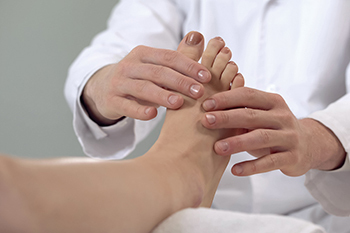
There are specific bones in the body that are unique because they do not use joints to connect to the other bones. These bones are referred to as sesamoid bones, and tendons are used to connect these bones to other bones in the body. Additionally, they can be found inside muscles. The sesamoid bones help to support the body, and sesamoiditis can happen when the adjoining tendons become inflamed and irritated. It is a common injury among ballet dancers, and this is a result of the style of dancing they pursue. Sesamoiditis may also affect baseball catchers and runners, and this can be a result of the pressure that is placed on the feet. People who are afflicted with this condition may find it difficult to straighten or bend the big toe, and it may be accompanied by swelling and pain on the sole. Treatment often starts with stopping the activity that caused the condition, and it can be beneficial to wear shoes that fit correctly. If you feel you may have sesamoiditis, it is urgent that you contact a podiatrist who can help you to manage this ailment.
Sesamoiditis is an unpleasant foot condition characterized by pain in the balls of the feet. If you think you’re struggling with sesamoiditis, contact one of our podiatrists of Livingston Foot Care Specialists. Our doctors will treat your condition thoroughly and effectively.
Sesamoiditis
Sesamoiditis is a condition of the foot that affects the ball of the foot. It is more common in younger people than it is in older people. It can also occur with people who have begun a new exercise program, since their bodies are adjusting to the new physical regimen. Pain may also be caused by the inflammation of tendons surrounding the bones. It is important to seek treatment in its early stages because if you ignore the pain, this condition can lead to more serious problems such as severe irritation and bone fractures.
Causes of Sesamoiditis
- Sudden increase in activity
- Increase in physically strenuous movement without a proper warm up or build up
- Foot structure: those who have smaller, bonier feet or those with a high arch may be more susceptible
Treatment for sesamoiditis is non-invasive and simple. Doctors may recommend a strict rest period where the patient forgoes most physical activity. This will help give the patient time to heal their feet through limited activity. For serious cases, it is best to speak with your doctor to determine a treatment option that will help your specific needs.
If you have any questions please feel free to contact our office located in North Bellmore, NY . We offer the newest diagnostic and treatment technologies for all your foot and ankle needs.